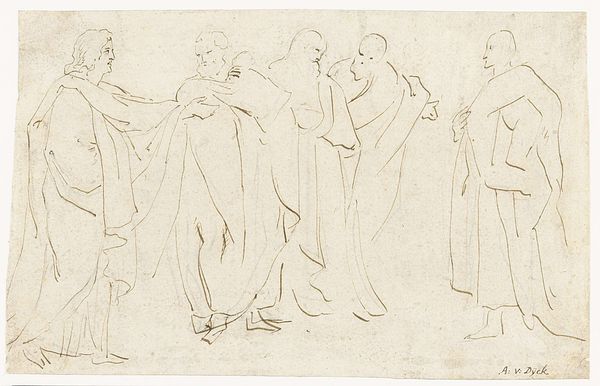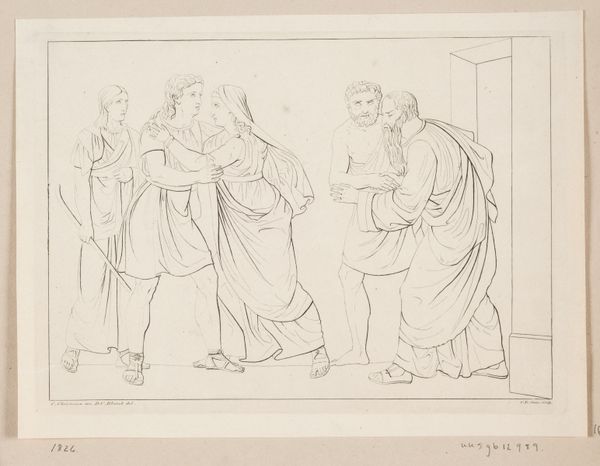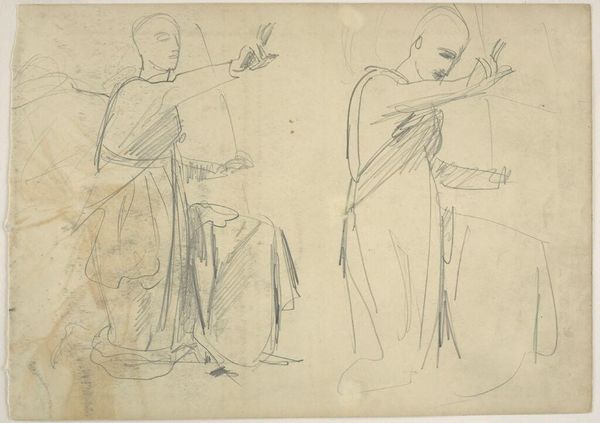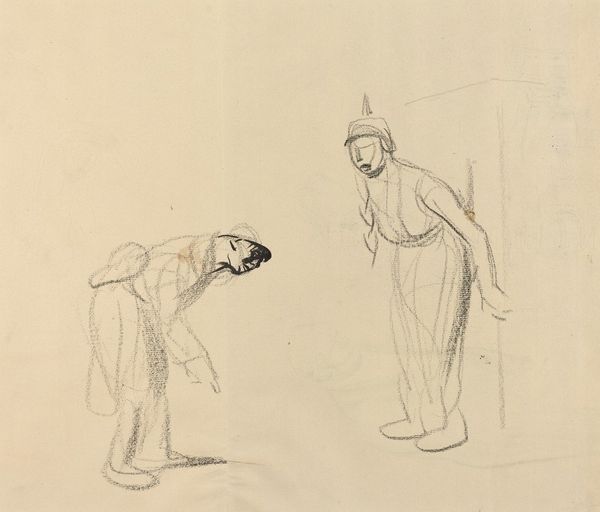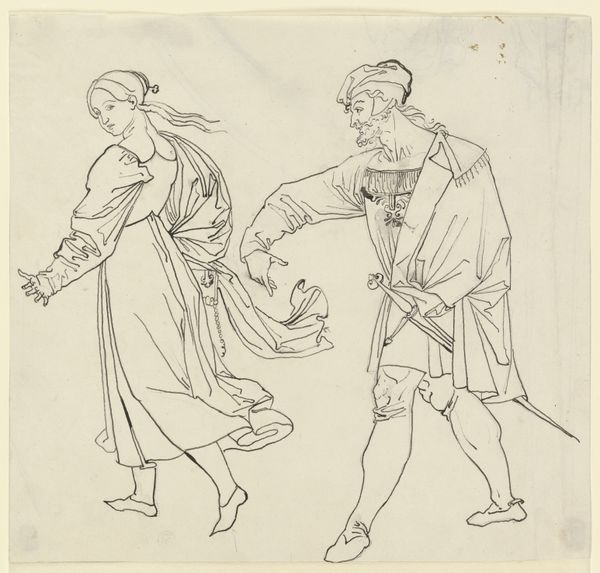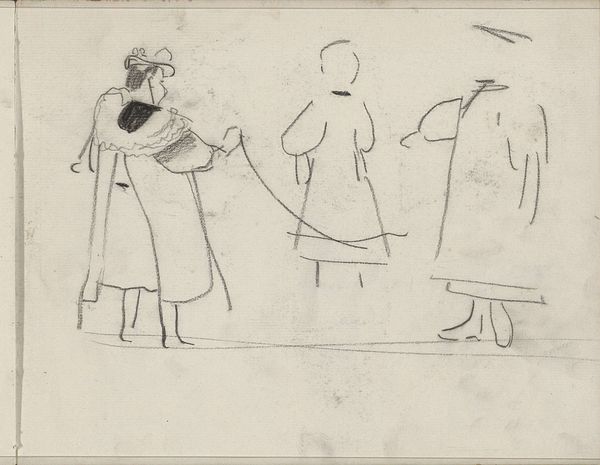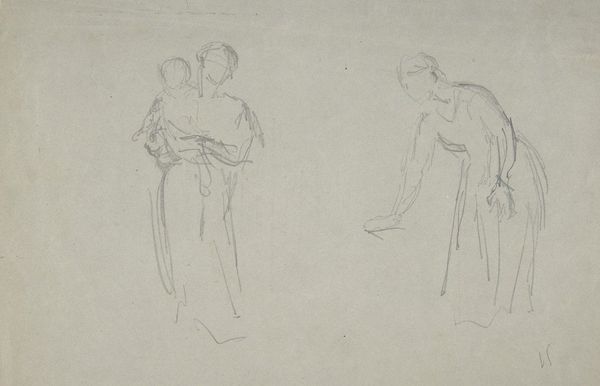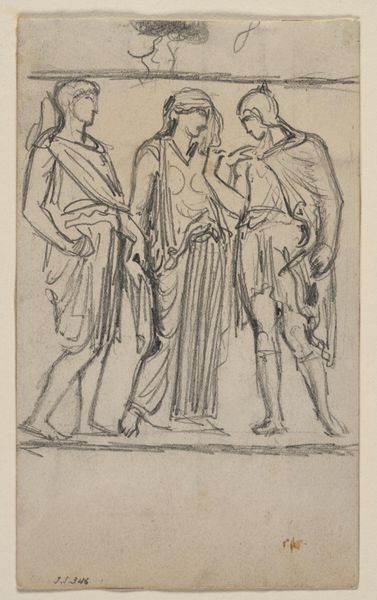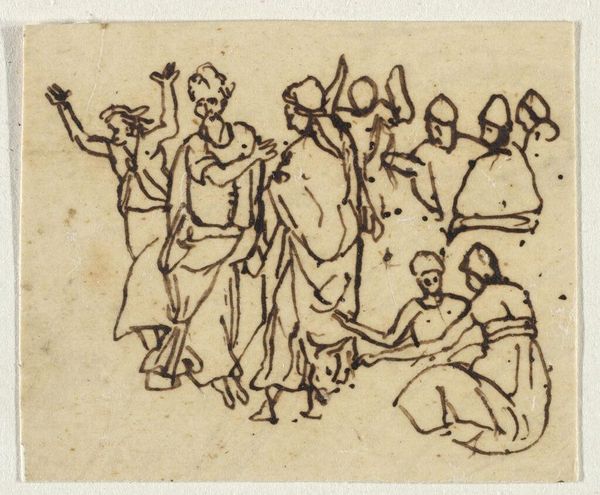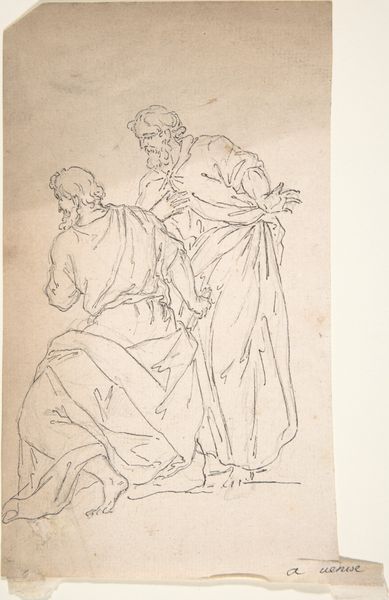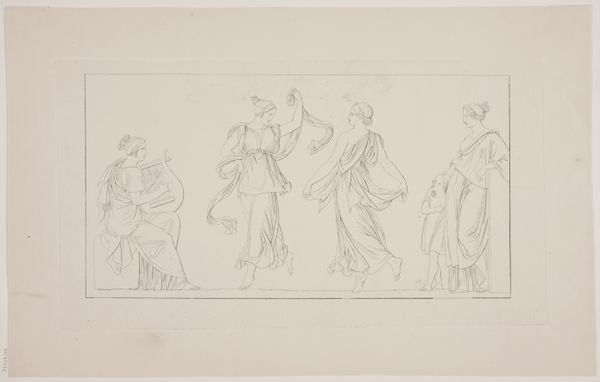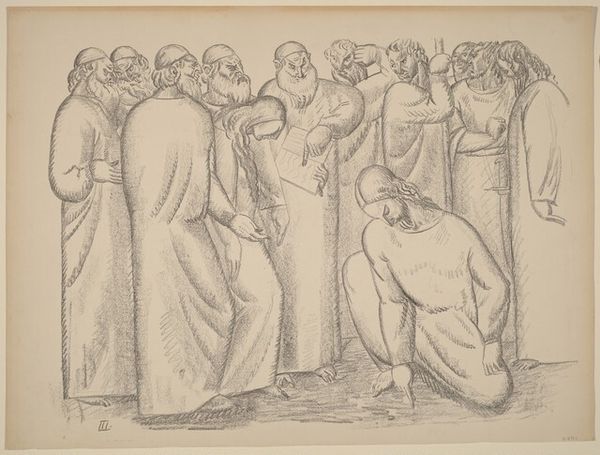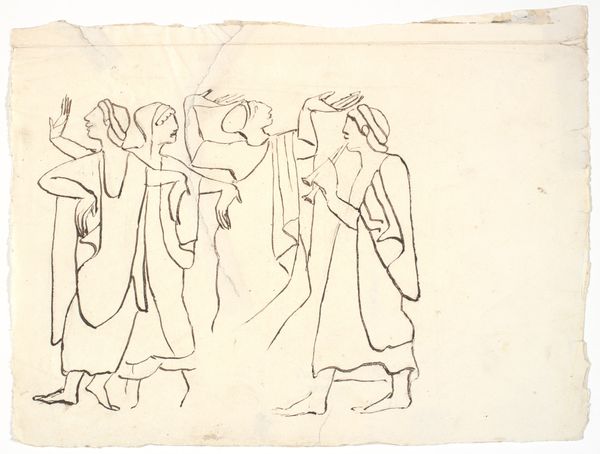
Studies voor kalender van 1901: staande vrouw die een plant opbindt 1876 - 1924
0:00
0:00
drawing, paper, pencil
#
portrait
#
drawing
#
figuration
#
paper
#
pencil
#
realism
Dimensions: height 344 mm, width 471 mm
Copyright: Rijks Museum: Open Domain
Editor: This intriguing drawing, "Studies voor kalender van 1901: staande vrouw die een plant opbindt" by Gerrit Willem Dijsselhof, dating between 1876 and 1924, is rendered in pencil on paper. The repetition of the female figure strikes me—almost like a photographic sequence. How would you interpret this work? Curator: It’s a fascinating piece when viewed through the lens of its historical context. Given its title, “Studies for a 1901 Calendar”, and Dijsselhof’s interest in decorative arts, one can see how it embodies the public role of art at the turn of the century, namely art fulfilling commercial and everyday functions. Do you notice how the figure almost becomes a symbol, rather than an individual? Editor: Yes, I see that now. It is less about capturing the essence of the model and more about representing a task or ideal for a specific time or date. Curator: Precisely. And this shift also raises interesting questions about the politics of imagery. Who is represented, how, and for what purpose? Calendars were a ubiquitous medium. This piece isn't just art for art's sake; it's art intended for mass consumption and the shaping of social ideals. Consider also the rise of Art Nouveau during this period. Its focus on flowing lines and nature may well have informed Dijsselhof’s visual choices here, tying in these 'studies' to an explicit 'style.' Editor: That makes a lot of sense! I was initially drawn to its simplicity, but I understand how a historian interprets it very differently by emphasizing commercial context. Curator: It demonstrates how art is deeply interwoven with socio-political fabrics. Dijsselhof here actively participates in this commerce. His figure almost advertises "womanhood," the feminine touch. Editor: Thanks, I never thought of calendar art being an example of “the politics of imagery”. I will be viewing these works of art much more comprehensively going forward!
Comments
No comments
Be the first to comment and join the conversation on the ultimate creative platform.
